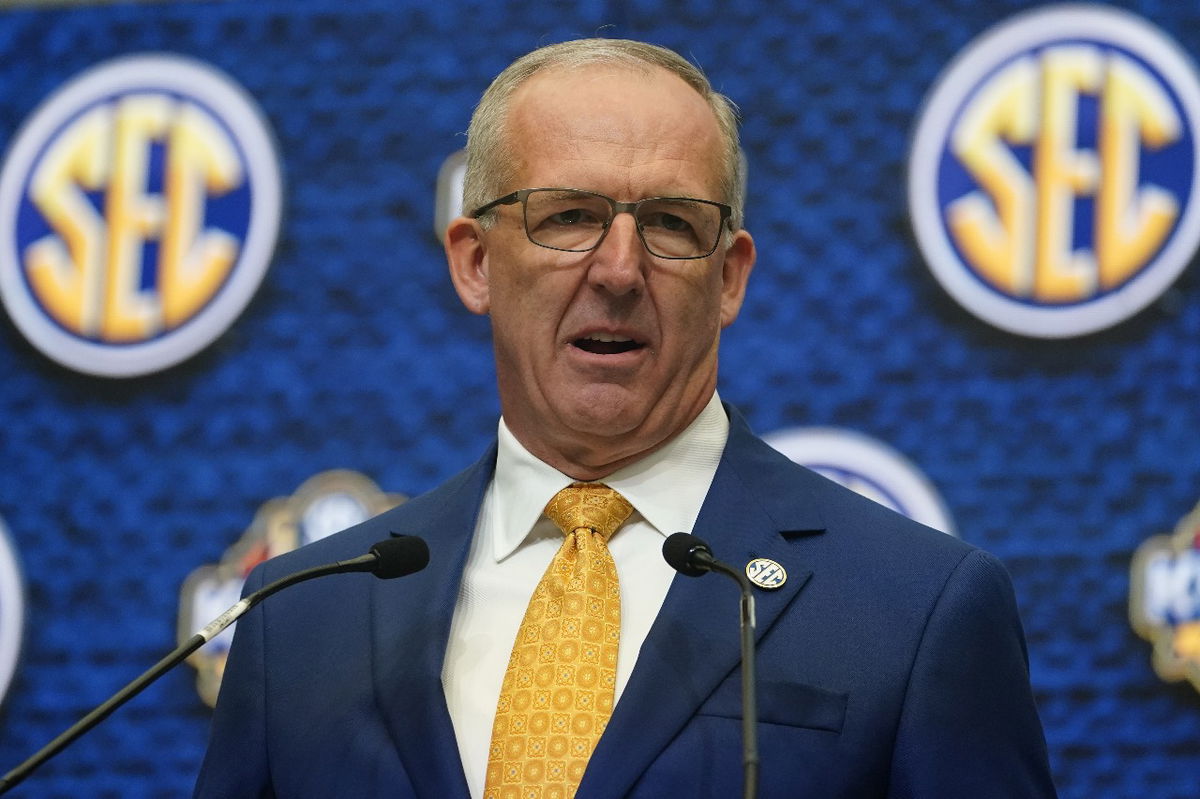

College sports have reached a knife’s edge, and the power lives mostly in two zip codes. The SEC and Big Ten are now functionally a two‑league system given their media heft and playoff leverage, even if the logos still say NCAA. The Big Ten reported about $928 million in FY2024 revenue and is tracking toward $1.2–$1.4 billion in FY2025, while Greg Sankey’s SEC disclosed $840 million and is also on a path toward ten figures, which shapes every policy fight before it begins. That gap shows up in schedule control, selection criteria, and who frames the first draft of any reform, which is why the rest of the sport often negotiates from its heels.
Watch What’s Trending Now!
That is the backdrop for Congressman Michael Baumgartner’s public blast, which makes a values case and a process case in one thread. “If you care about the future of college sports, you should write to SEC Commissioner Greg Sankey and Big Ten Commissioner Tony Petitti and tell them to stop their big ego, bullying approach to the college sports landscapes,” he wrote, before adding, “These two guys are going to burn the whole thing down with their selfish approach to squeezing out every last dollar from everyone else.”
He ties the “sports arms race” to harm for fans, players, and schools as he calls for competitive balance for all. He also argues universities are subsidized public goods that should be regulated accordingly, which reads as a pushback against revenue consolidation and playoff designs that tilt selection toward the richest calendars. The deeper critique is of incentives, not personalities. When revenue and access flow through two leagues, Olympic sports and the middle class of college athletics sit at risk unless guardrails and shared standards are hard-coded into governance and postseason rules.
ADVERTISEMENT
If you care about the future of college sports, you should write to SEC Commissioner Greg Sankey and Big Ten Commissioner Tony Petitti and tell them to stop their big ego, bullying approach to the college sports landscapes. These two guys are going to burn the whole thing down… pic.twitter.com/PEt1rdELlM
— Congressman Michael Baumgartner (@RepBaumgartner) September 8, 2025
All of this is on the backdrop of a leaked email that sparked the exchange, which framed both tone and tactics in this round of jostling. “This morning, I received a letter, apparently authored through your conferences, that was sent to me by our government relations firm,” Greg Sankey wrote, adding that the signatories’ names were on it and that he assumed they were aware of its contents, in reference to a letter by the Group of 6 commissioners to Congress. “I would have welcomed the opportunity to discuss your concerns directly before seeing this correspondence,” he continued, then argued that open communication among colleagues is the most productive path forward, a line that positions private coordination as the proper forum even when the dispute is about public policy and federal requests.
Baumgartner shared a copy of Greg Sankey’s email to the G6 commissioners after their congressional outreach, linking the private pushback to the public critique in real time. Sankey’s close reads like procedural leadership and like message discipline, depending on where one sits in the room. “Whether you agree or disagree with my perspectives, I have sought to be clear and transparent in sharing my thinking,” he wrote, before noting, “I remain open to dialogue whenever you believe it would be useful; however, it appears you do not believe conversations are beneficial on these important matters,” and urging colleagues “to carefully weigh both the outside ideas and the full impact of the ideas that seem to be driving this discussion.”
ADVERTISEMENT
So what is really happening in the conferences is a race to define the post‑settlement era before the cement dries, with the two biggest leagues holding the pen unless others can marshal counterweights in Congress, in the CFP boardroom, or in court. The numbers explain the leverage, but the emails and posts explain how it gets applied and why smaller leagues escalate in public when private channels feel like dead ends. The fairest way forward is clarity on postseason access, transparent scheduling and ranking math, and hard protections for Olympic sports, backed by enforceable rules that cannot be gamed by whoever buys the next prime‑time slot. Until that exists, every leaked note and every fiery post will feel like a referendum on who gets to author the sport, and who just gets to live in it.
ADVERTISEMENT
Power and pushback
“All I can say is ‘Wow!!’. Bullying the G6 conference commissioners to prevent them from representing their members and making their voices heard!? Is this consistent with the goal of doing what is best for ALL of college sports – women’s sports, Olympic sports, and smaller schools??”
This was the reaction of Tech billionaire Cody Campbell. And it lands like a siren because it frames the leaked note not as routine lobbying, but as a move to sideline the very leagues most vulnerable to consolidation. The charge goes beyond tone. It questions whether the process itself is inclusive when postseason access, resource allocation, and sport sponsorships ride on who gets heard.
Top Stories
Sean Payton Announces Retirement Plans as Broncos HC Demands Improvement From Bo Nix & Co. Before Playoffs

Greg Biffle’s $4M Worth Prized Possession Still Without a Buyer Leaves NASCAR Fans Heartbroken

LIV Golf Braces for Another Possible Exit in Wake of Brooks Koepka Departure

Biff Poggi All But Confirms Bryce Underwood’s Michigan Future After Announcing His Own Departure

Roger Federer Draws Criticism from Swiss Government Chief for Tourism Boom in Country

NASCAR World Mourns as Former Watkins Glen President Michael Printup Passes Away at 60

Campbell’s pushes the same pressure point. If commissioners with the most leverage steer the agenda, the downstream risk is a thinner Olympic sports ecosystem and fewer pathways for schools outside the power duopoly. That is why a booster with national reach would weigh in here. Stability depends on transparent governance, not private ultimatums. Everyone can live with shared criteria, but not on frameworks that lock in advantage. Read together with the broader outcry from elected officials and league leaders, the message is to bring the process into the sunlight, widen the coalition, and build guardrails that keep opportunity meaningful for programs that don’t control the biggest TV windows.
ADVERTISEMENT
ADVERTISEMENT
ADVERTISEMENT
ADVERTISEMENT

